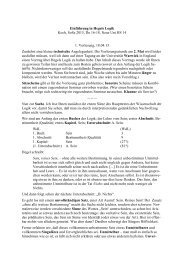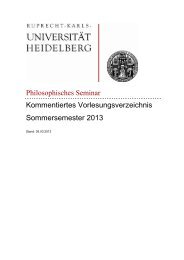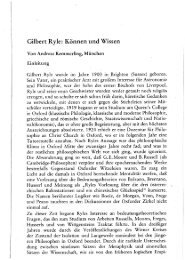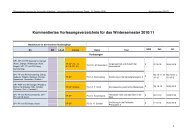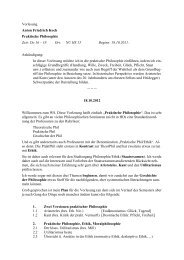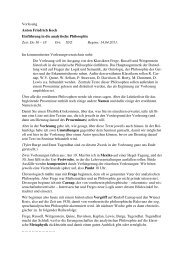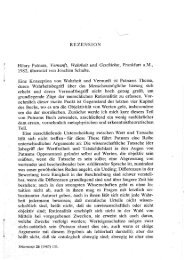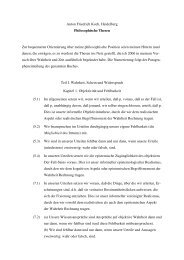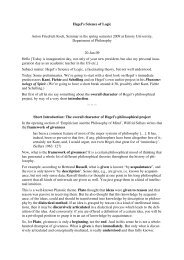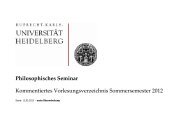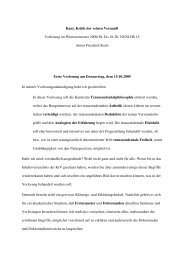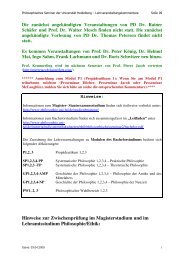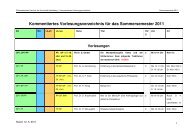KANT'S CRITIQUE OF TELEOLOGY IN BIOLOGICAL EXPLANATION
KANT'S CRITIQUE OF TELEOLOGY IN BIOLOGICAL EXPLANATION
KANT'S CRITIQUE OF TELEOLOGY IN BIOLOGICAL EXPLANATION
You also want an ePaper? Increase the reach of your titles
YUMPU automatically turns print PDFs into web optimized ePapers that Google loves.
Natural Purpose 45<br />
can scarcely imagine it otherwise than as a purpose, i.e. a realized<br />
concept ("vestigium hominis video"). Here we assume an actual<br />
causality according to a concept and look for the agent (whom Kant<br />
consistently reduces to an understanding) who realized in sand the<br />
concept of hexagon. In this example we are clearly dealing with the<br />
idea of the product, not with the idea of the effects of the product that<br />
motivate its production. The motives and intentions of the artist —<br />
perhaps his anticipation of the surprise of the philosopher on<br />
discovering the hexagon — play no role in this analysis.<br />
It will be worthwhile, especially with regard to the structure<br />
of biological explanation to examine closely the difference between<br />
the intellectual anticipation of the artifact itself (causa formalis) and<br />
the intellectual anticipation of the effects or consequences of that<br />
artifact (causa finalis). Both can be subsumed under the concept of<br />
"teleology", although only the causa finalis is commonly designated<br />
as "purpose." In Kant just the reverse seems to be the case. At any<br />
rate it is essential in the analysis of Kant's text to ask what kind of<br />
teleology and what kind of purposes he means. We have already<br />
seen that the causa formalis was an essential component of the deistic<br />
systems of the world, but that these systems denied the causa<br />
finalis any role in physical explanation. In these systems teleology<br />
consisted in a clockmaker God, assumed to be real, so that the entire<br />
world system was considered to be a divine artifact. If Kant is in fact<br />
restricting himself to the causa formalis, then he is not introducing<br />
any kind of teleology that was not already part of deistic science.<br />
After introducing the example above to illustrate purpose,<br />
i.e., the causality of a concept, Kant poses the question whether<br />
there can also be things, which, like artifacts, can only be conceived<br />
as purposes but which are not artifacts but rather pure products of<br />
nature. Such things, which, like artifacts, are supposed to have an<br />
intrinsic purposiveness, Kant calls natural purposes ("Naturzwecke")<br />
and attempts to explicate this concept and to determine the<br />
difference to an artifact:<br />
On the other hand, in order to judge something, which we cognize as a<br />
natural product, to be a purpose, and hence a natural purpose, then —<br />
unless perhaps a contradiction lies in the very thought — we need more<br />
than this. (B*286; CJ, 249)<br />
I shall go into some detail on Kant's analysis of this concept<br />
since it is the pivotal concept of his entire discussion of mechanistic<br />
explanation in biology and is the source of the "antinomy" resolved



